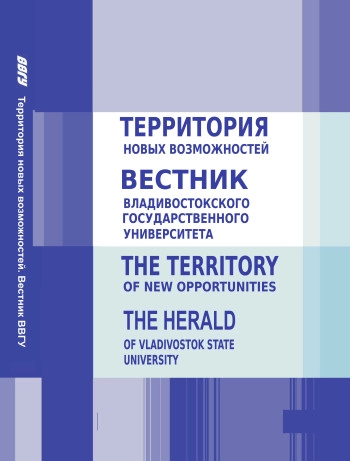graduate student
This study examines English language curricula for grades 1–8 and 9–12 developed by India’s National Council of Educational Research and Training (NCERT). The researchB.L. Vul'fson, and I.A. Tagunova. The study employs theoretical analysis of scientific literature and regulatory documents, as well as methods of synthesis and comparison. The source base includes research by Indian educators, official documents and statements from India’s Ministry of Education, works by international scholars and education specialists, and publications in academic journals. The study characterizes the essence of English language curricula in Indian schools and identifies their key features. It outlines the hierarchical structure of India’s education system and describes the goals and objectives of NCERT. Each curriculum includes objectives, material resources, lesson topics, skill development goals, knowledge assessment methods, and pedagogical approaches. The distinctive features of English language instruction in India include: preparation for practical everyday use of English in an intercultural context, development of critical thinking and the ability to express personal opin-ions, and preparation for higher education. All state-developed educational programs are advisory in nature and remain relatively general, allowing schools and teachers to structure their instruction in more detail based on these frameworks. Additionally, the National Curriculum Framework (NCF), published in 2023, provides guiding principles for English language instruction and defines the scope of its content.
curriculum, syllabus, English language instruction, India, education policy.
1. Bokova T.N., Ivanova S.V. Research on the influence of postmodern ideas on the theory and practice of education (using the example of the USA) (The influence of postmodernism on education). Educational space in the information age (EEIA-2017): Sat. scientific. tr. International. scientific-practical. conf. (Moscow, June 07–08, 2017). Moscow: Institutefor Education Development Strategy of the Russian Academy of Education; 2017. P. 77–97. EDN ZXCLAN
2. Bokova T.N. The main trends in the development of education in the USA and Russia in the XX century. Bulletin of the Moscow State Regional University. 2014; (1): 14. EDN SATWYL
3. English in India: Education System and National Identity / Yu.A. Volkov, N.D. Pashkovskaya, M.N. Savelyeva, D.A. Fomicheva. Education Management. 2023; (10- 2): 287–296. URL: https://doi.org/10.25726/r4950-4247-2328-g (accessed date: 24.02.2024).
4. Gubina M.A. Reform of school education in India 2020: economic prerequisites and tasks. Bulletin of the Peoples' Friendship University of Russia. Series: Economics. 2023; 31 (4): 776, 777.
5. Suprunova L.L. Experience in modernizing education in India. Moscow: ProgressTradition; 2009. 248 p.
6. Tagunova I.A., Dolgaya O.I. Interdisciplinary content of general education abroad / Institute for Education Development Strategy. Moscow: Federal State. budgetary scientific institution "Institute for Education Development Strategy"; 2023. 108 p.
7. Aithal P.S., Aithal S. Analysis of the Indian National Education Policy 2020 towards Achieving its Objectives. International Journal of Management, Technology, and Social Sciences. 2020; 5 (2): 19–41. URL: http://dx.doi.org/10.2139/ssrn.3676074 (accessed date: 23.02.2024).
8. Arijit G., Madhumathi P. Validity of NCERT Curriculum for English // Journal of Contemporary Educational Research and Innovations. 2012; 2 (5): 110–113. URL: https://ssrn.com/abstract=2441574 (accessed date: 23.02.2024).
9. Maxwell O., Diskin-Holdaway C., Loakes D. Attitudes towards Indian English among young urban professionals in Hyderabad, India. World Englishes. 2023; (42): 272–291. URL: https://doi.org/10.1111/weng.12550 (accessed date: 24.02.2024).
10. Mohanty A. Languages, inequality and marginalization: Implications of the double divide in Indian multilingualism. International Journal of the Sociology of Language. 2010; (205): 131–154. URL:https://doi.org/10.1515/ijsl.2010.042 (accessed date: 23.02.2024).
11. National Council of Education Research and Training: Syllabus for Classes at the Elementary Level: English (Classes I–VIII). URL: https://ncert.nic.in/ (accessed date: 15.02.2024).
12. National Council of Education Research and Training: Syllabus for Secondary and Higher Classes: English (Classes IX–XII). URL: https://ncert.nic.in/ (accessed date: 15.02.2024).
13. Winson V., Arunkumar V., Rao D.P. Exploring the Landscape of Teaching and Learning English as a Second Language in India. Assyfa Learning Journal. 2023; 1 (2): 104–111. URL: https://doi.org/10.61650/alj.v1i2.123 (accessed date: 23.02.2024).





